25 Most Popular Filipino Foods
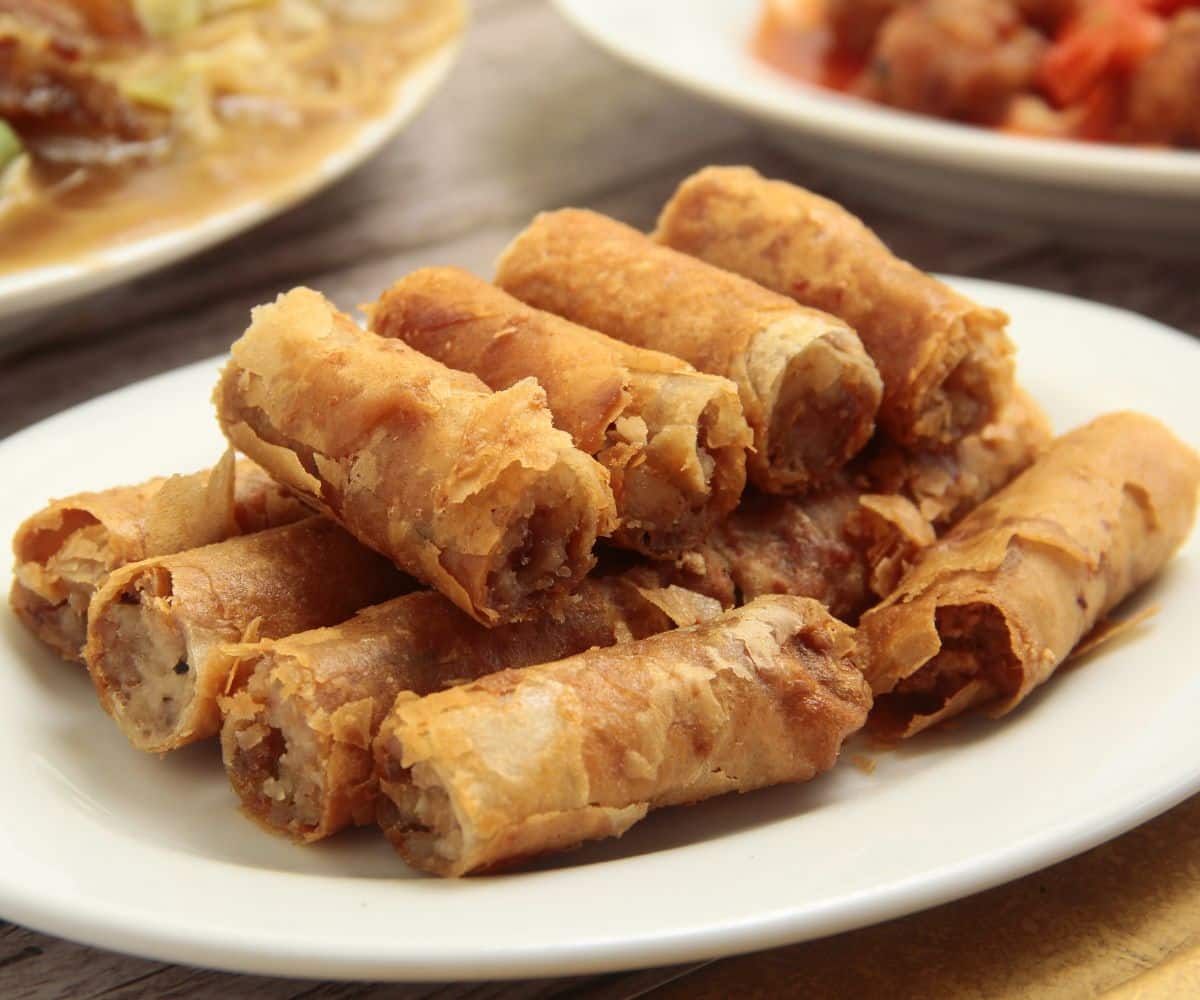
“Kain na!” – a Tagalog phrase that translates as “Let’s eat!” – is a kind gesture typically heard by every Filipino. Whether they’re having a meal with friends, family, or a random passer-by asking for directions, it’s a generous offer to share a humble meal.
Situated in southeast Asia between the Pacific Ocean and the South China Sea, the Philippines consists of over 7,000 islands, the three main islands being Luzon, Visayas, and Mindanao.
Filipino cuisine is not only rich in terms of its bold flavors but also in history and culture that have evolved down the centuries – from its Austronesian origins to today’s mixed cuisine of Malay, Spanish, Chinese, and American influences.
Many might think that because of these influences, Filipinos lack a distinct cuisine that they can call their own, but the uniqueness of Philippine cuisine comes from its inclusion of ingredients from all over the globe. Rather than being fully influenced by other countries, these foreign influences have been “Filipinized”, creating a unique culinary culture and the baseline of Philippine flavors.
1. Adobo

This quintessential Filipino dish was influenced by the Spanish when they invaded and settled in the Philippines during the 16th century. Adobo originated from the word ‘adouber’ which means “to dress meat in vinegar or spices”. The word has metamorphosed through the centuries, changing to Adobar, to Adobado, and finally, Adobo.
There are vast differences in the ways Adobo is prepared and cooked across the different regions of the country. However, only one ingredient is a must as it’s the heart and soul of this dish: vinegar. Adobo’s other basic ingredients include soy sauce, garlic bay leaf, and peppercorns.
The meat is marinated and stewed in this mixture for hours and is usually served over a bed of white rice that complements the sweet and tangy sauce. Some recipes include coconut milk, which mellows the strong acidity, others use a sweetener (sugar or honey) to balance the flavor of the soy sauce and vinegar, and some include ingredients like ginger or onions to create a more robust flavor.
It’s not just the spices that vary in Adobo, the type of meat varies too. The most common Adobo is cooked with chicken or pork, sometimes both, but it’s also cooked with seafood such as shrimp or fish or exotic meats like crocodile or frog. There’s even a vegetarian version of this dish using tofu, kangkong (water spinach), and sitaw (string beans).
2. Sinigang
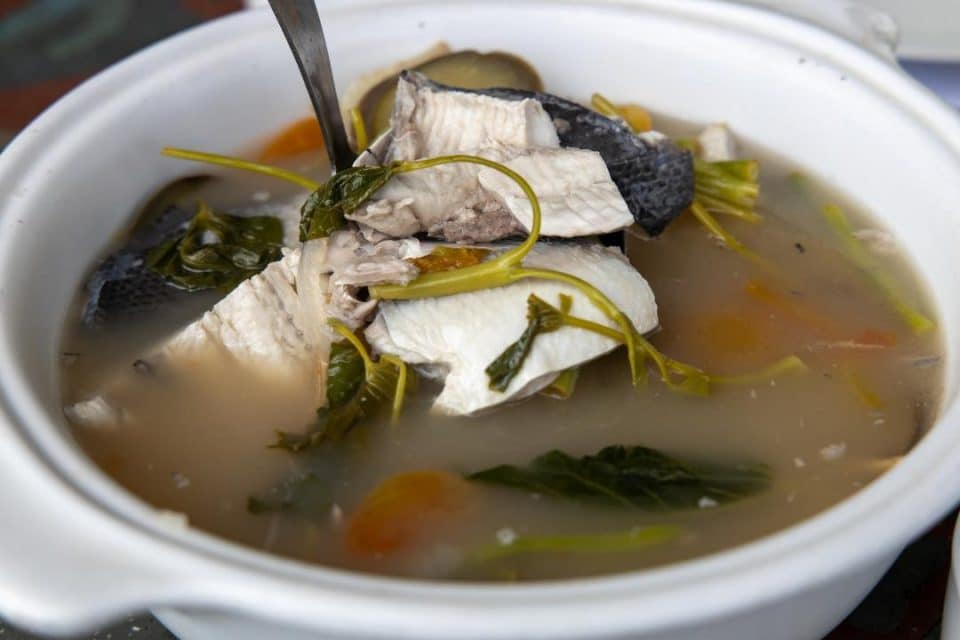
Sinigang is a hearty Filipino sour soup cooked with tamarind which gives it its distinct flavor and served in Filipino homes across the country any day of the week. It’s composed essentially of meat, garlic, tomato, onion, and whatever souring agent is preferred.
This dish would not be complete without its vegetables, which are usually water spinach, eggplants, radish, okra, or long beans.
Traditionally, Sinigang is made by boiling and crushing tamarind, the juice of which gives it its irresistibly sour yet savory flavor. In addition other souring agents, including guava, green mango, or calamansi can be used to flavor this dish.
The meat usually used in the dish is pork but you’ll also find beef, chicken, fish, or shrimp. It’s also possible to omit the meat to create a vegetarian Sinigang, which is just as delicious.
Sinigang can be eaten on its own but is best paired with steamed white rice, especially when it’s very sour. Sinigang’s versatility makes it a truly great dish for all.
3. Lechon
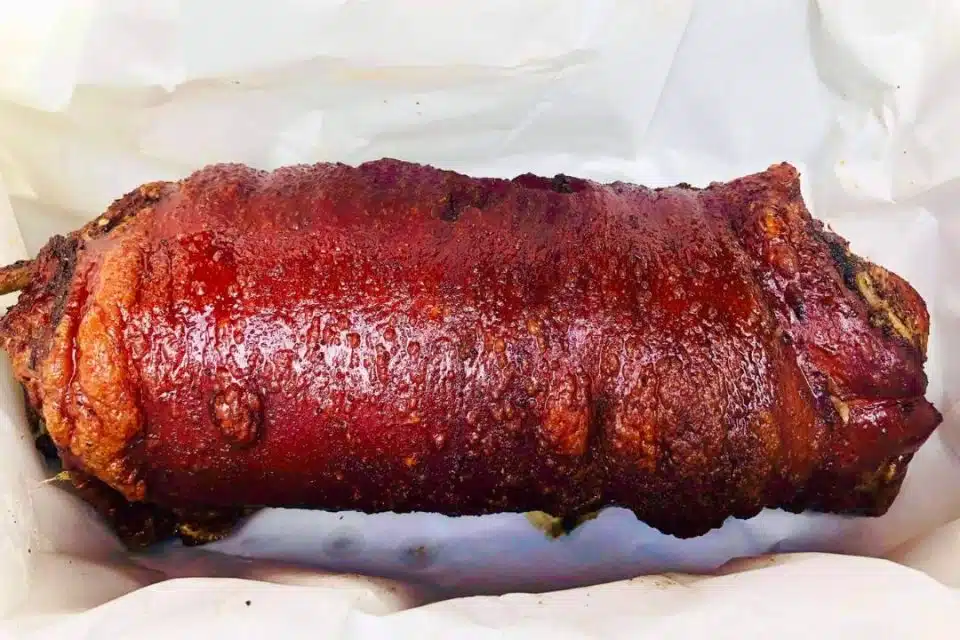
When Anthony Bourdain proclaimed the Filipino lechon “the best pig ever”, it gained a global reputation overnight. Lechon, derived from the Spanish word for “roasted suckling pig”, is probably the most popular dish in the country. Traditionally the star of any celebration meal, from Christmas to birthdays and local festivals, lechon is a mouthwatering showstopper.
The art of roasting lechon starts with marinating the pig in salt, pepper, soy sauce, or coconut water for a few days before stuffing it with aromatics such as lemongrass, garlic, tamarind, onions, or chives. It is then roasted on a large bamboo spit over an open fire for hours.
Once the lechon is cooked, the skin, which many consider is the best part of the dish, is served with pieces of meat, with white rice on the side.
Lechon is often served with a traditional rich liver sauce made from chicken liver cooked in vinegar, sugar, and herbs.
4. Kaldereta

Beef Kaldereta (beef stew) is a traditional Filipino dish most commonly seen at parties and holidays. The name Kaldereta came from the word caldera or cauldron, which is a large cooking vessel.
Goat the meat that’s most commonly used, but beef is a worthy substitute. This stew is simmered in tomato puree for hours, cooked with liver spread, bell peppers, and a bit of soy sauce for extra flavor. Every household has its own variation of Kaldereta – some add carrots, cheese, green peas, and potatoes.
5. Kare- Kare

This luscious Filipino oxtail stew is simmered slowly with peanut butter for a unique flavor and texture. The dish is flavored with annatto seeds which also provide its vibrant yellow-orange color. Kare-kare is usually only cooked on very special occasions because preparing it can be so time-consuming.
The process starts with tenderizing the ox tail, beef, and (sometimes) ox tripe for almost two hours. It is then cooked with ground peanuts and creamy peanut butter, seasoned with fish sauce, and finished off with bok choy, string beans, and eggplants.
Kare-kare is a real crowd pleaser as its nutty-sweet and savory flavors excite the taste buds with an explosion of flavors. This dish has to be eaten with rice, which balances the intense flavors perfectly.
6. Sisig

Along with Adobo, Sisig is another famous Filipino dish with a global reputation. It contains chopped pig’s ears, snout, cheeks, and belly sauteed with garlic, onion, green chilies, and vinegar and is served on a sizzling plate.
There are many different ways to serve sisig, but the process is always the same: boiling, grilling, and finally frying the meat to produce those crunchy pieces.
Sisig originated in the province of Pampanga, the Culinary Capital of the Philippines, and has gained international acclaim in recent years, once proclaimed as “arguably the best pork dish on earth” by The New York Times.
7. Bulalo
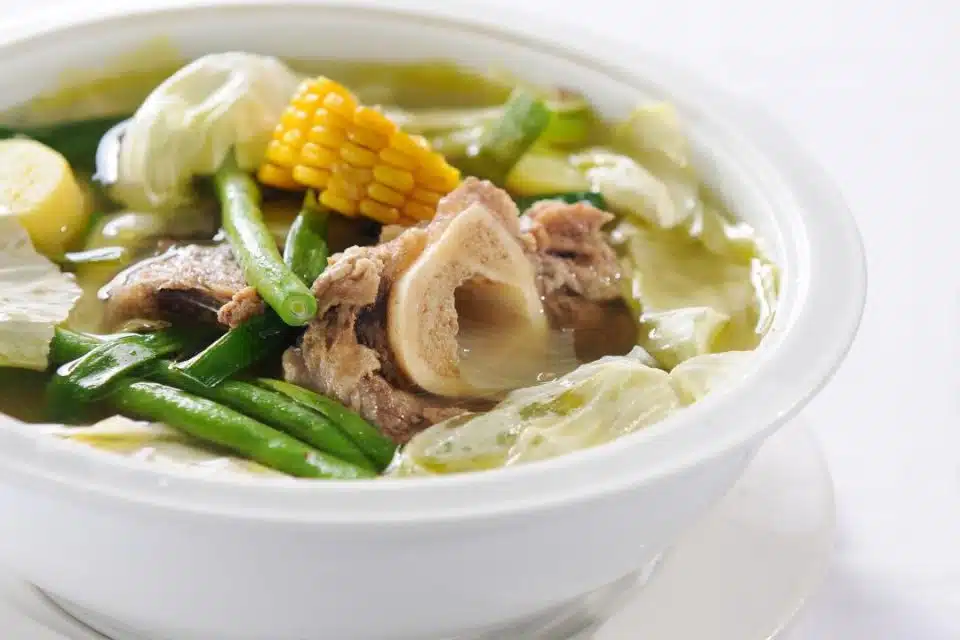
Bulalo is a succulent beef marrow soup cooked simply by boiling all the ingredients on a low simmering heat.
This ultimate Filipino comfort food contains a good chunk of beef shank boiled in water with onions, garlic, peppercorns, and salt. Vegetables such as cabbage, corn, and potatoes can be included.
This tasty soup originated in Batangas province, where the best cattle can be found. It is typically enjoyed during the cold months, but is just as delicious any time of the year.
8. Laing

Laing is a Bicolano dish (ie, typical of the Bicol Region) made with dried taro leaves and coconut milk. It is carefully and slowly simmered, to bring together all the flavors and creating a dish that’s mildly spicy but very addictive!
Cooking laing is very simple – but it does require some patience while the taro leaves absorb all the liquid from the coconut milk and the meat (usually pork) tenderizes. Laing is said to be at its best when left a day or two after being cooked, before being served with warm rice.
9. Halo Halo

Halo-halo which translates to “mix-mix” is the most popular Filipino dessert especially during the summer.
The preparation of Halo-halo varies depending on personal preference, but the key ingredients are shaved ice, milk, and an assortment of toppings from sweetened beans to seasoned fruits. Halo-halo is served with a generous amount of leche flan on top.
10. Bicol Express

Another stew popular in the Bicol Region, Bicol Express is made with pork, especially the fatty parts such as the belly and shoulder, and uses coconut milk and coconut cream.
The pork is cooked by boiling it in coconut milk, along with chilies and spices. This luscious, deliciously filling dish is best eaten with rice to balance the spiciness.
11. Tinolang Manok

Tinolang Manok or Chicken Tinola is a classic comfort food. It is prepared by sautéing chicken pieces with garlic, ginger, onion, and fish sauce and then simmering them in chicken stock for about an hour.
It is traditionally cooked with green papaya, which can be substituted with sayote.
This easy, light, and healthy soup is like a big bowl of hugs in cold weather. With the addition of malunggay or chili leaves, it’s not only packed with delicious flavors, but is also packed with health-giving nutrients.
12. Pansit

Pansit (lo mein) is a versatile noodle dish influenced heavily by the Chinese. There are numerous variations – pansit dishes can be made using an assortment of noodles and cooking methods, making each one uniquely distinct.
This dish is an important part of any Filipino feast or celebration. The most common types are: Pansit Bihon (with thin bihon noodles), Pansit Canton (thick egg noodles), and Sotanghon (thin glass noodles), to name a few.
Pansit is typically prepared by sautéing meat (usually chicken) with garlic, onions, and soy sauce, then tossing it with toppings such as fish balls, cabbage, carrots, Chinese sausage, quail eggs, shrimp, and sometimes pieces of pork.
Over the years, Filipinos have developed regional variations of pansit – some make it as a soup while others serve it as a side dish.
13. Leche Flan

Leche Flan is one of the most beloved and popular desserts in the Philippines with an original recipe dating back hundreds of years.
The word “leche” means milk in Spanish, and leche flan is a local term derived from the original Spanish leche de flan, which means milk flan.
This special treat is served on holidays and for special occasions. It is a simple yet decadent dessert with topping of luscious caramel. It melts in your mouth and has a rich, silky, smooth and creamy custard texture. Simply delicious!
14. Lumpiang Shanghai

Lumpia is the Filipino version of the Chinese spring roll, similar in size and shape but completely different in terms of flavor.
Typical lumpia ingredients include ground pork, carrots, and prawns, all seasoned with just the right amount of soy or oyster sauce. These ingredients are sealed in a crepe-like rice or flour wrapper, covered with an egg wash and deep fried until golden brown.
A sweet and sour Banana Ketchup dipping sauce is typically served with this mouthwatering Filipino classic which will leave you wanting more!
15. Pinakbet

Originating from the Ilocos Region of the Philippines, pinakbet is a popular vegetable dish that uses Bagoong (fermented shrimp paste) to enhance the flavors of the other ingredients. The dish usually includes bitter melon, eggplant, okra, string beans, chili peppers, winged beans, and pumpkin which are then spiced with ginger, onions, or garlic.
Pinakbet is traditionally cooked until almost dry, but some variations have an almost soupy consistency; the flavors of the vegetables are then accentuated with shrimp paste and best paired with rice.
16. Dinuguan

Dinuguan comes from the word “dugo”, which translates as blood. It is a savory Filipino pork blood stew made of diced pork, vinegar, pork blood, and chili peppers. While some people like using pork offal such as intestines or other pork body parts, these are an acquired taste.
Dinuguan is savory but not heavily salty and it usually has a sour note. The texture varies widely from a fairly thin soup to a thick, dark grainy stew. This special dish is typically served at weddings, fiestas, and you’ll also find it in Lechon houses.
17. Filipino Style Spaghetti

Filipino Spaghetti, also known as Sweet Spaghetti, is similar to Italian spaghetti Bolognese. The ground beef or pork is first browned with aromatics and then simmered in tomato sauce and a choice of herbs until thick and hearty.
What sets this Filipino favorite apart is the addition of sweet banana ketchup to the meat sauce and the grated cheddar topping (rather than parmesan) when it is served.
This perennial favorite is served at most Filipino fast food restaurants and is commonly seen at children’s parties.
18. Ube Halaya
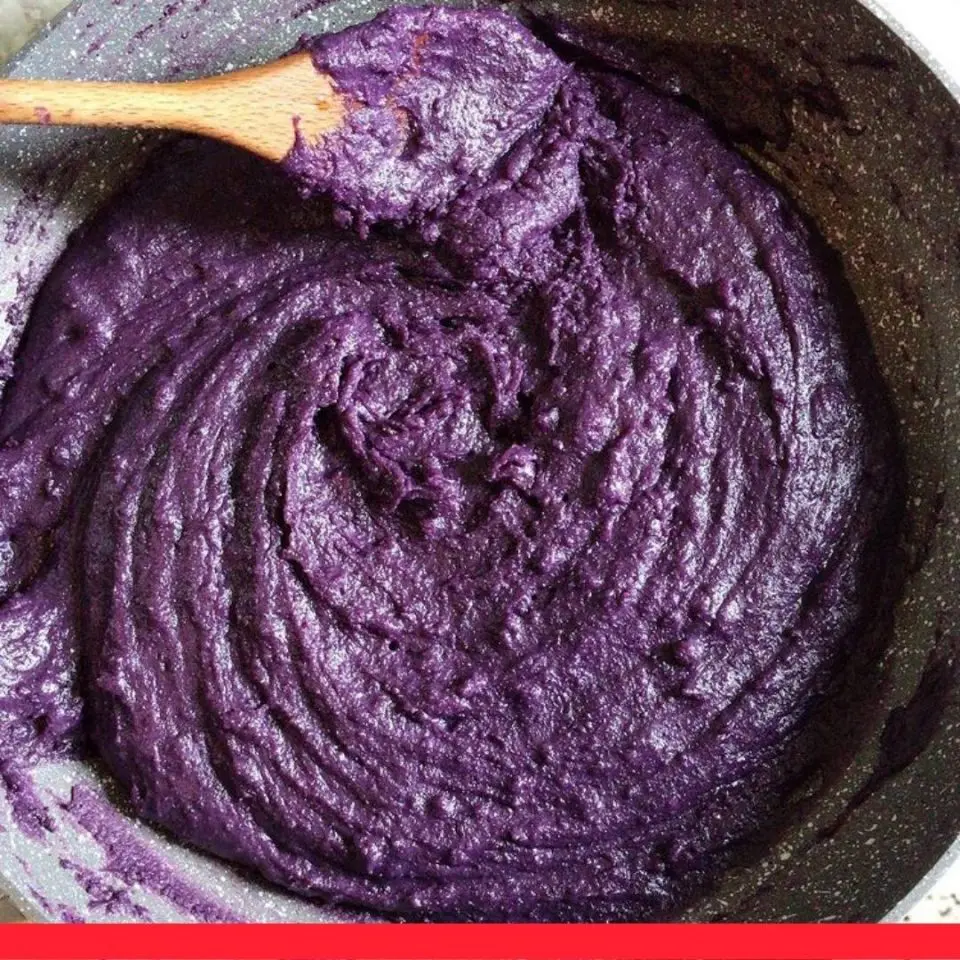
Ube Halaya, distinguished by its vibrant purple color, is a unique dessert primarily associated with Filipinos internationally.
The name is derived from the Indian words ‘ube’ (pronounced oo-be), meaning purple yam, and ‘halaya’ meaning jelly or mash. Ube Halaya is a sweet, smooth-textured pudding that can be eaten as a snack, with desserts, or used to flavor/color ice cream and cakes.
19. Pandesal

Pandesal is the most popular bread roll in the Philippines and is a staple in every Filipino household. Local bakeries, fondly called panaderias in the Philippines, and pandesal vendors start selling these delicious treats as early as 4:00AM in the morning.
Best paired with coffee or hot chocolate, this Filipino favorite is luckily quite easy to find. Just head out to the bakery nearest to you and they’re sure to have what you’re looking for!
20. Torta

Tortang Giniling (ground meat omelette), Tortang Talong (eggplant omelette), Tortang Dulong (silver fish patties), and Tortang Sardinas (sardine omelette), among many other Tortas, are popular egg-based dishes in the Philippines.
They are frequently made with leftovers from large birthday parties and celebrations. Filipinos love food so they make do with whatever leftovers they have and turn them into a whole new creation the following day. What a delightful way to be practical!
21. Chicharon (Pork Rinds)
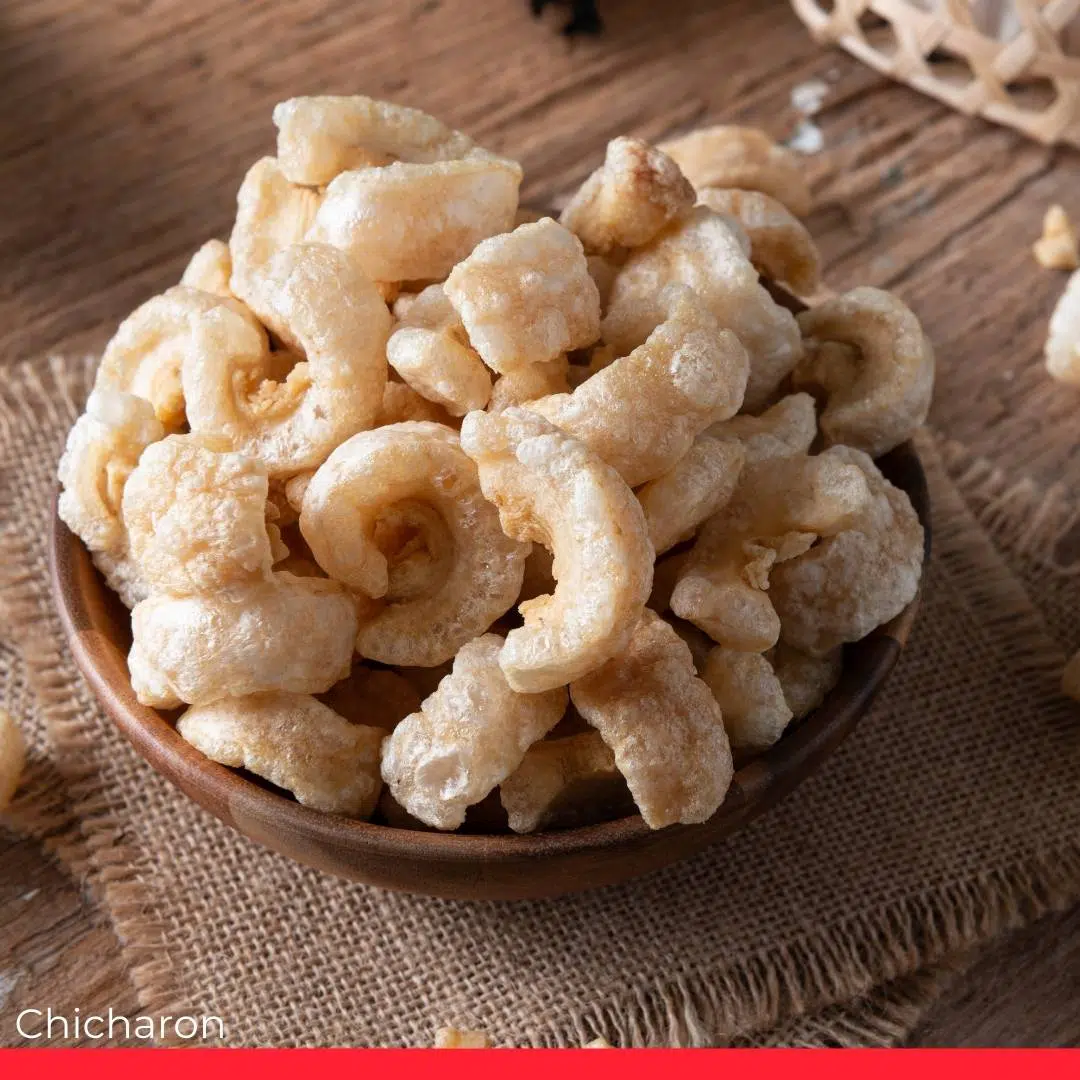
Chicharon, also known as Chicharrón or Chicharrónes, is a crunchy, tasty, and sinfully delicious snack in the Philippines.
Chicharon is salted deep-fried pork rinds Filipinos usually have as a snack or pulutan (finger food) that pairs very well with beer. Besides beer, Chicharon is also eaten with different kinds of dipping sauces and vinegar.
Sometimes, Chicharon is used as a garnish or ingredient in other Filipino dishes such as Pinakbet (a vegetable stew), Munggo (mung bean soup), and Palabok (a type of Filipino noodle dish).
Editor’s Note: Chicarons are also a popular snack in Spain and in many of Spain’s former colonies. They have even become a staple food in Florida, where they were introduced by Cuban immigrants.
22. Filipino Pork Skewers
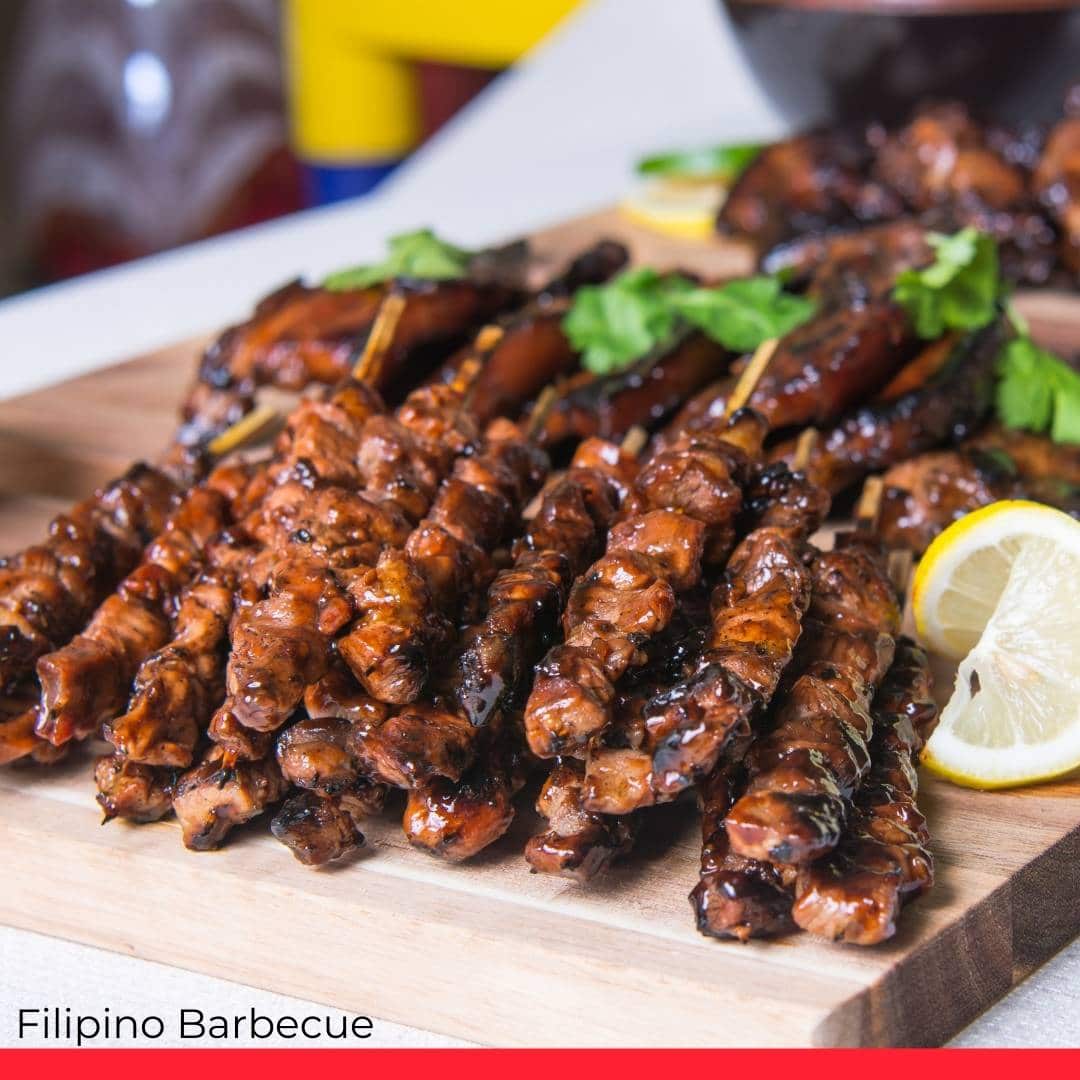
These pork skewers are a compulsory part of every Filipino celebration and they can also be found on every street corner, are extremely affordable and can be bought per stick or per bundle.
The pork is marinated in sweet and sour barbecue sauce, thinly sliced in square inches, layered on the skewer with the iconic piece of pork fat on the end. With each bite, one can savor the sweet, savory, and spicy flavors all at once. Definitely a must-try when visiting the Philippines.
23. Isaw (Grilled Chicken or Pig Intestines)
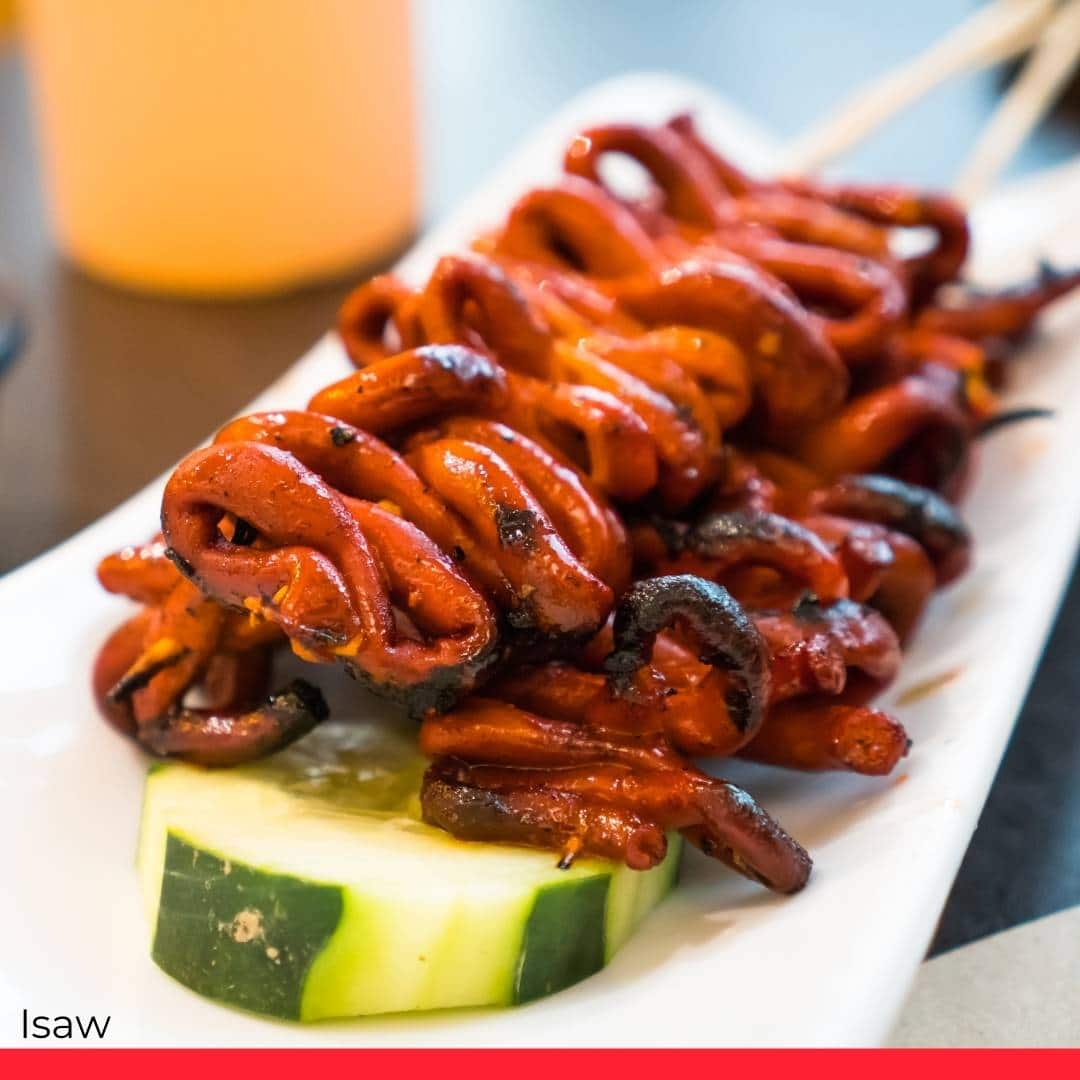
Isaw is a popular street food in the Philippines made from grilled chicken or pig intestines. The intestines are cleaned thoroughly, then marinated in a mixture of vinegar, soy sauce, garlic, and other spices before being boiled and then grilled over hot charcoal until they become brown and crispy.
They go very well with beer or liquor, but can also be eaten with rice.
24. Betamax

Betamax, named after the black rectangle-shaped tapes of the ’70s it resembles, is grilled coagulated pork or chicken blood.
It is indeed not for the faint of heart but is actually not that bad. It doesn’t taste anything like blood, but more of the barbeque marinade or vinegar sauce that’s offered as a dip.
25. Banana-cue
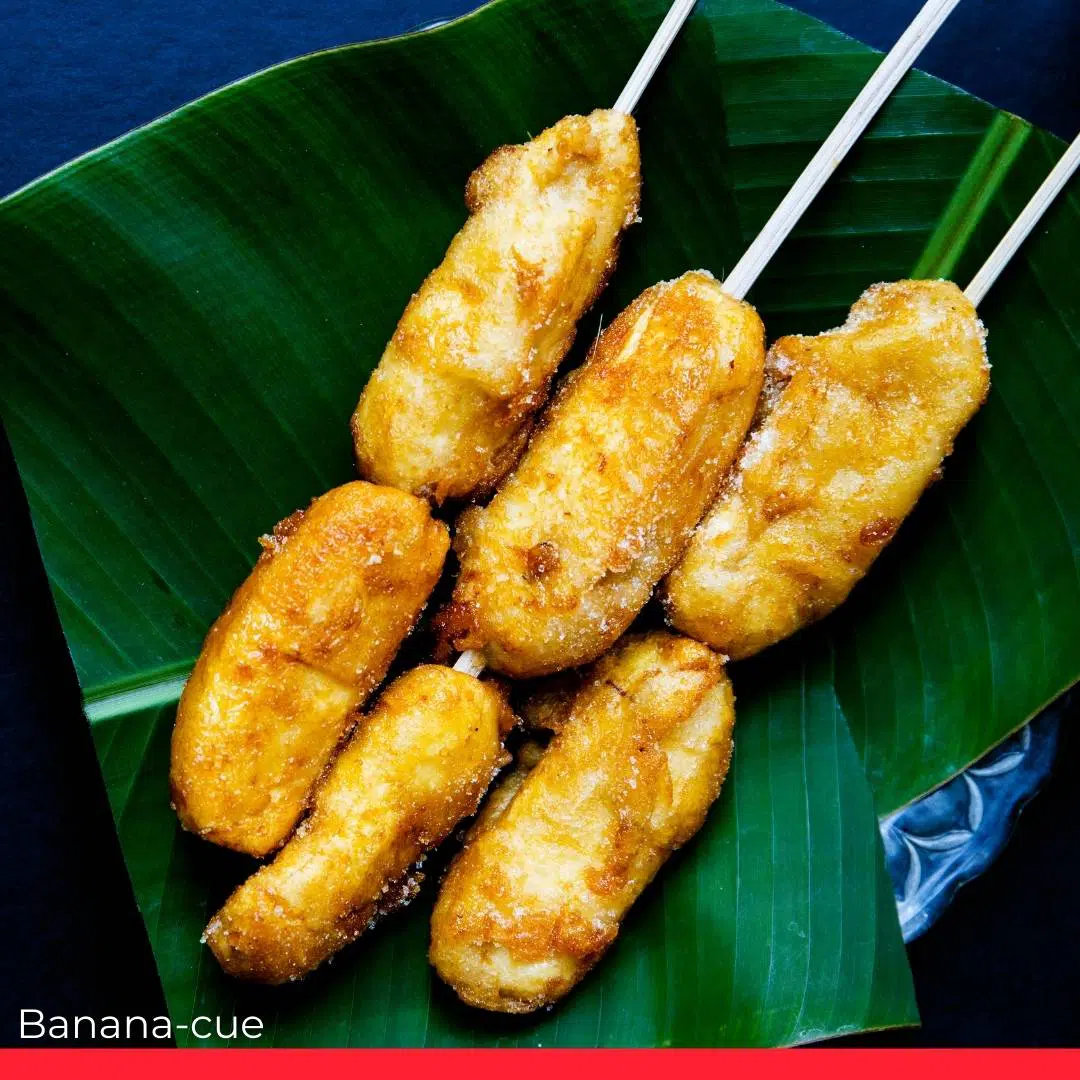
These are delicious deep-fried (not grilled) bananas, covered with caramelized brown. This is a tasty and easy to make snack, and it’s a popular choice for street vendors.
Have we left any of your favorites off our list? Do you have a regional specialty that our community would love to hear about? Leave your comments below -we love hearing from you!
Want to learn more about cuisine in the Philippines? Check out below our guide to the most popular Filipino desserts.
Related: Most Popular Filipino Christmas Foods
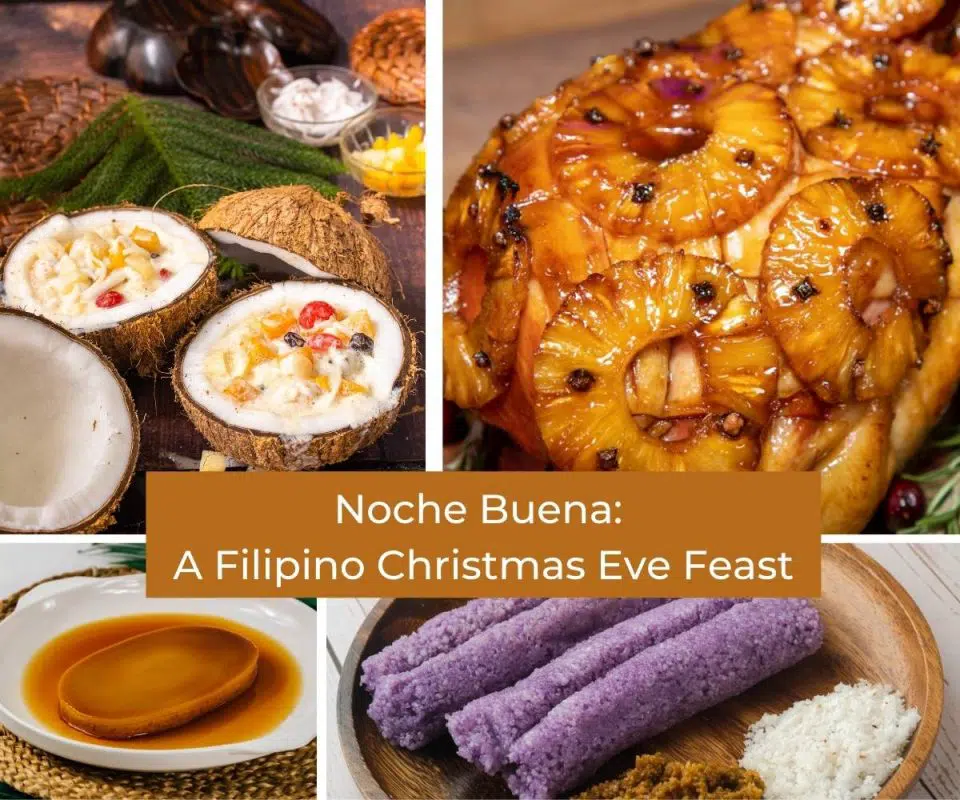


Menudo should be included in the list. Fiesta will not be complete without it. Of course Sisig is one of the bests.
Maybe not one of the most popular dishes but Paksiw na Pata is a favorite among my friends and I.
Oh dang. You need to step up your research game. Some of these dish origins are incorrect, specially the adobo.
I’d rather publish the authentic pinakbet which is specialized in the Ilocos region. When we do pinakbet we don’t sauté it. It is slowly cooked in tomatoes, real bagoong, garlic and ginger. This will give a special taste and aroma to the dish. The reason it is pinakbet is simply to slowly shrink (literal translation) the vegetables (as thus pinakebbet) . I am appalled when I see a picture of pinakbet with vegetables undone.
That Filipino style spaghetti, you forgot one of the main ingredients: that red chopped hotdog. What’s that made of?
I am a Singaporean, lived in the Filipino archipelago for 4 years in the 1980s. I believe I have tried every dish here although I may not have known its name then. My favourite is lechon at Maria Christina falls, Iligan. With a pint of San Miguel of course.
Nawala ang Bagoong sa Kare-kare. Kare-kare is best paired with sauteed Bagoong or shrimp paste as sauce.
There is no garlic in Sinigang unless it is Ginisang Sinigang. The writer should have made the distinction. Ginigisa ang Sinigang if “malansa or fishy” ang main ingredient like salmon belly or head, other fish and chicken.
My favorite dish is Puso Ng Saging with pork
Siopao was created by a Filipino Portuguese. Pao is bread in Pirtuguese, and originally it did not have the Sio before the Pao. Lumpia was created by a Filipina in late 18th century whereas Lumpia Shanghai was first cooked in early 20th century. The Visayan Dumplings and others were years ahead than the Chinese versions. Where is the food writers’ food patriotism?
Thanks for the clarification. We thought all the while that all these were Chinese food. Thanks, really?.
with this kind of filioino food i can survive in the mountain etc etc. etc. thank God for variety filipino food.
Good, thanks for introducing our very own recipes
Nice